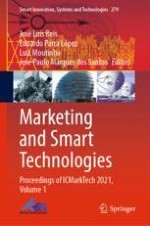This book includes selected papers presented at the International Conference on Marketing and Technologies (ICMarkTech 2021), held at University of La Laguna, Tenerife, Spain, during December 2–4, 2021. It covers up-to-date cutting-edge research on artificial intelligence applied in marketing, virtual and augmented reality in marketing, business intelligence databases and marketing, data mining and big data, marketing data science, web marketing, e-commerce and v-commerce, social media and networking, geomarketing and IoT, marketing automation and inbound marketing, machine learning applied to marketing, customer data management and CRM, and neuromarketing technologies.
